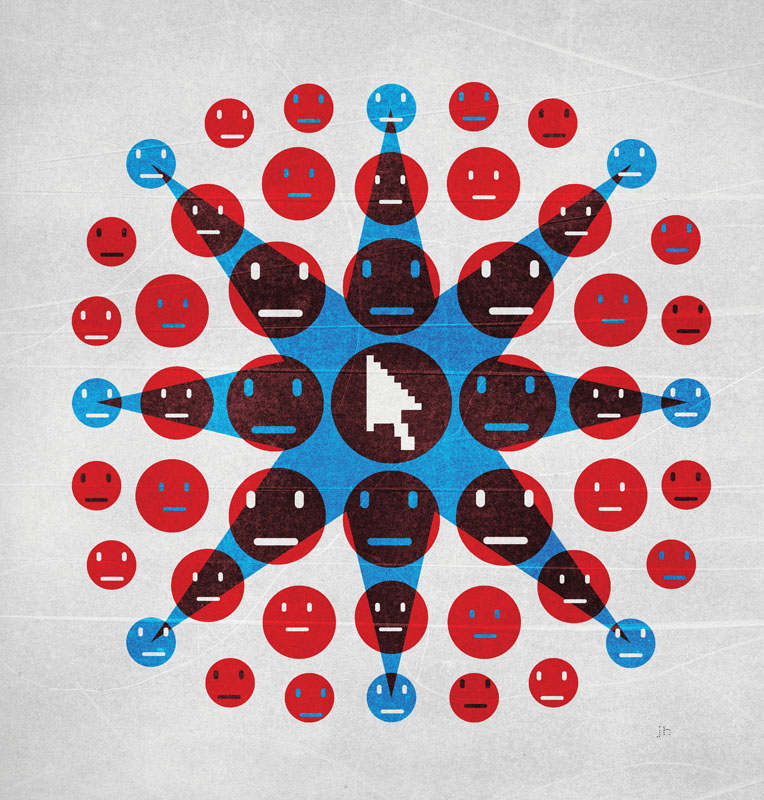Like
Connect the Online Dots
Links among social networking data could uncover critical safety information

An innovative examination of Facebook, Twitter, and other social media websites could help combat terrorism, improve e-commerce, and even identify pharmaceutical side effects.
Computer science and engineering Professor Gautam Das received a $450,000 Army Research Office grant to develop efficient analytic techniques for combining and understanding the data stored in online social networks. He is searching for implicit edges, which connect two seemingly unrelated occurrences on a social media platform. (Explicit edges, in contrast, represent more obvious relationships, such as a user’s friends, followers, and contacts.)
“We are trying to determine which are the more promising directions to pursue when seeking hidden data,” explains Dr. Das, director of UT Arlington’s Database Exploration Laboratory. “We’ll look at who is acquainted or are followers of one person or another across a broad spectrum of social networks.”
Das is collaborating with Professor Nan Zhang of George Washington University. The hidden-access model they are creating enables the researchers to construct and understand virtual social networks built upon multiple Web data sources.
For example, from the view of an Army intelligence agency, a real-world social network formed by a group of suspected terrorists can be considered a virtual social network. This network does not reside on any single website, but instead leaves traces on a variety of Web data sources, like forums, exchanges on social media sites, and even comments on certain online articles.
According to College of Engineering Dean Khosrow Behbehani, the team’s work will also help expand UTA’s increasing expertise in the field of “big data.”
Illustration by john hersey

















